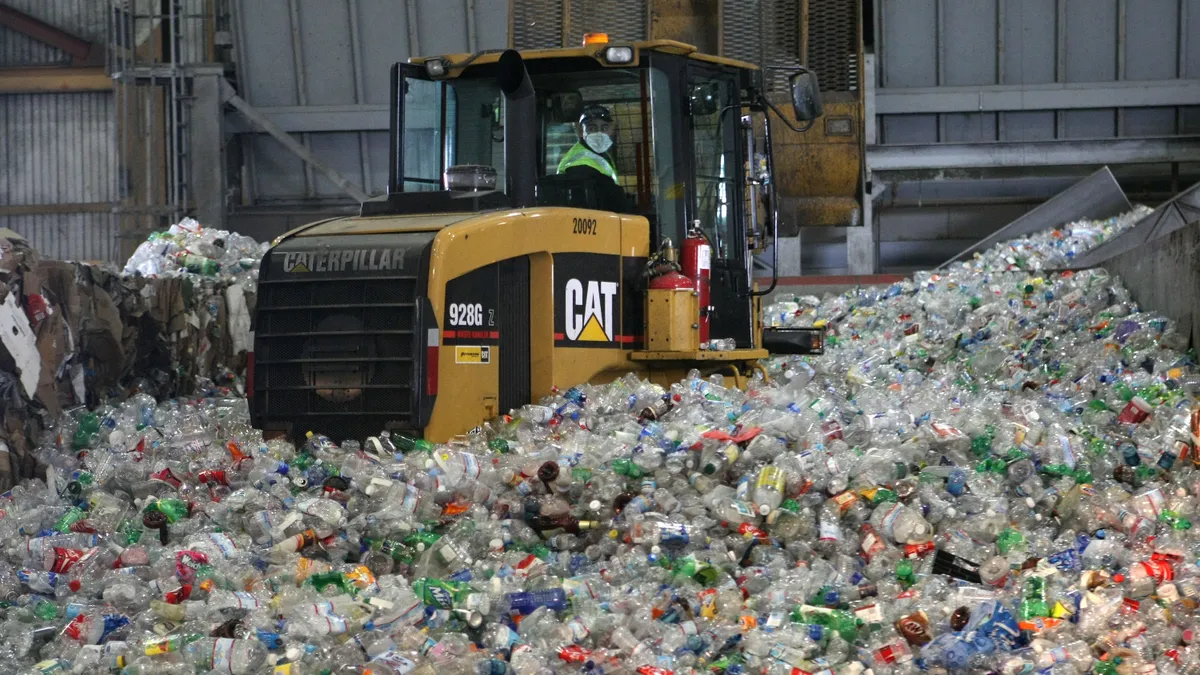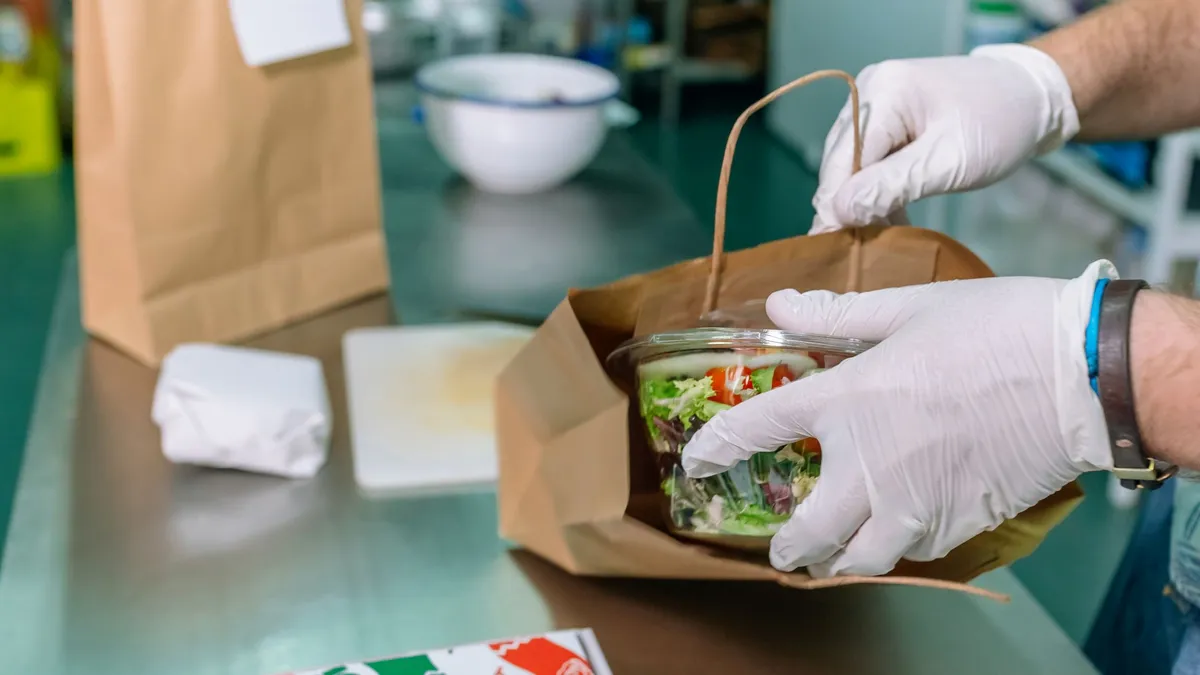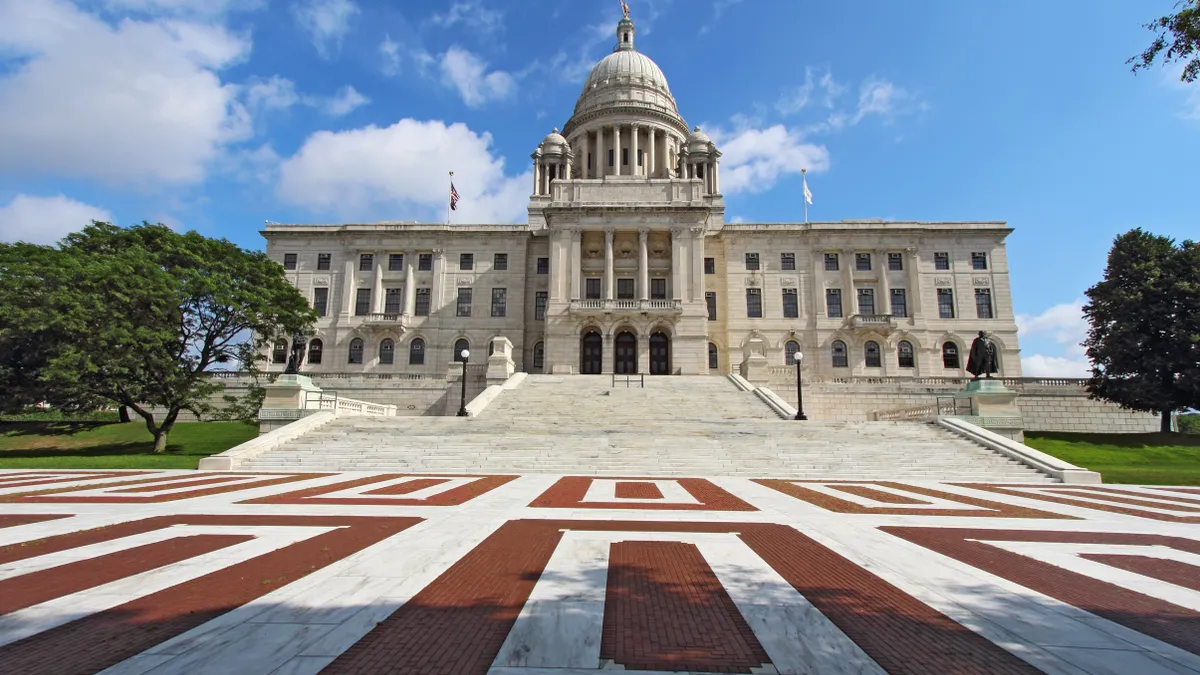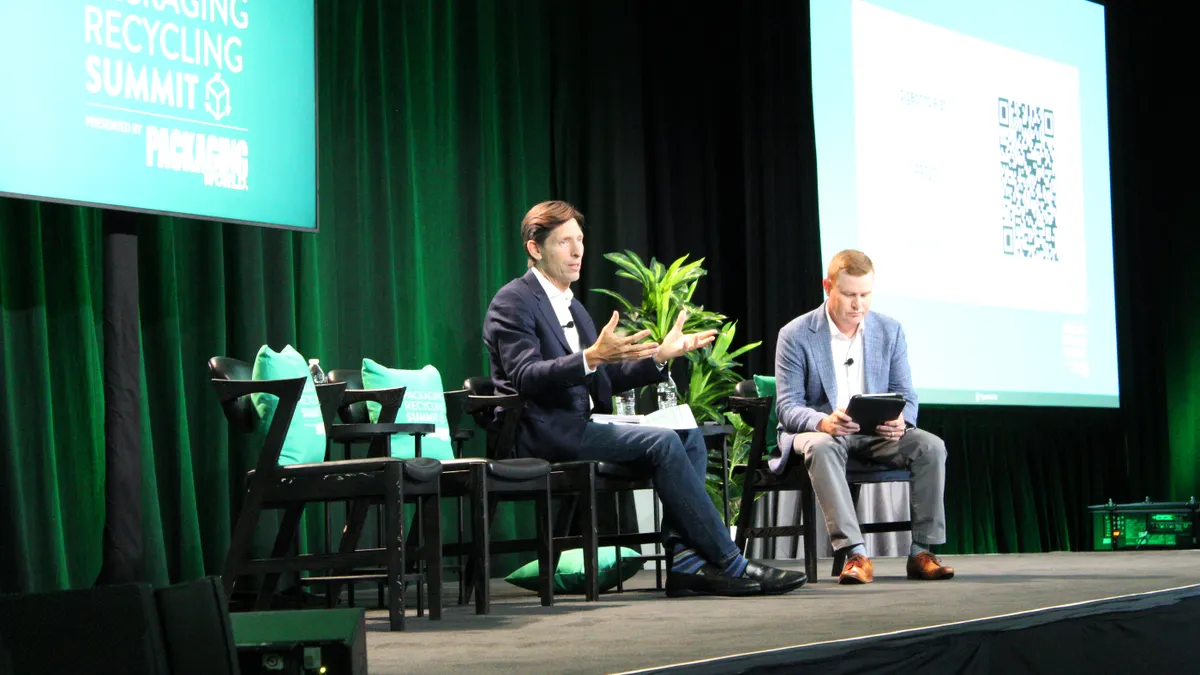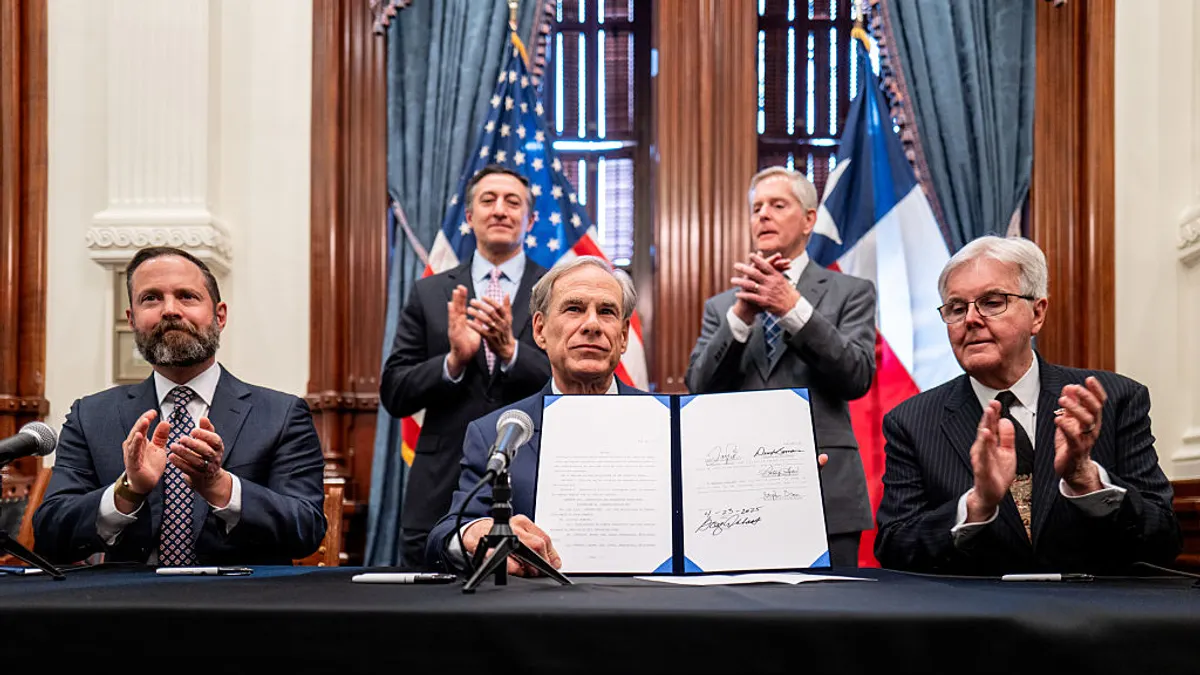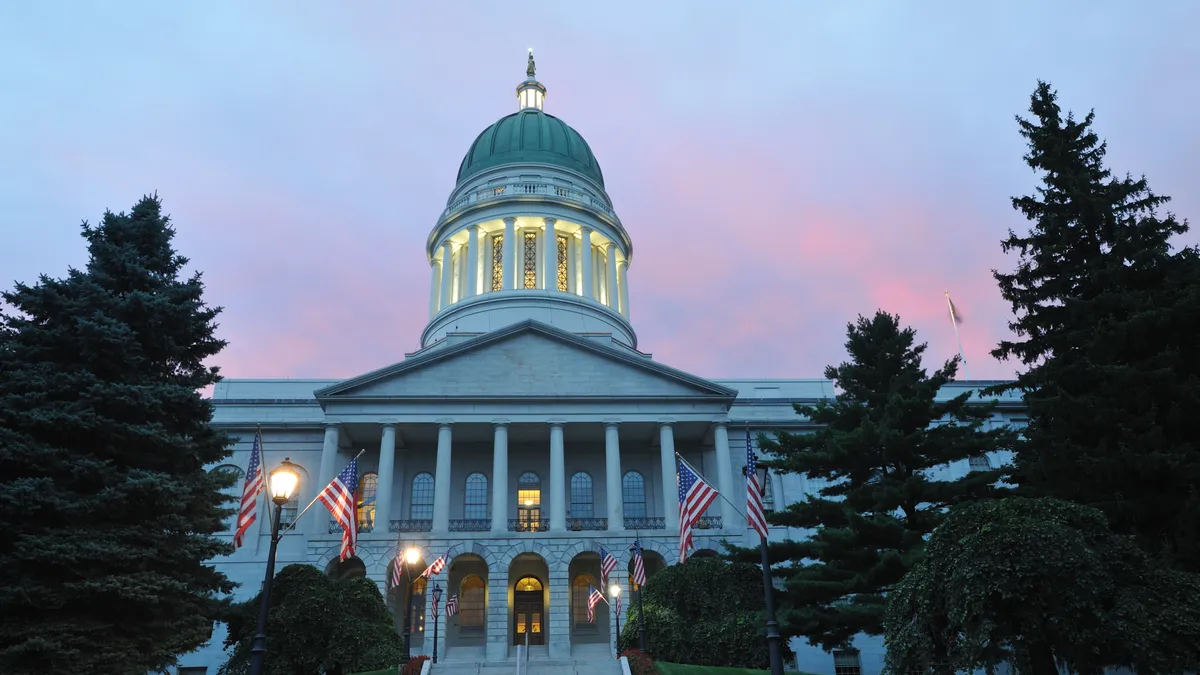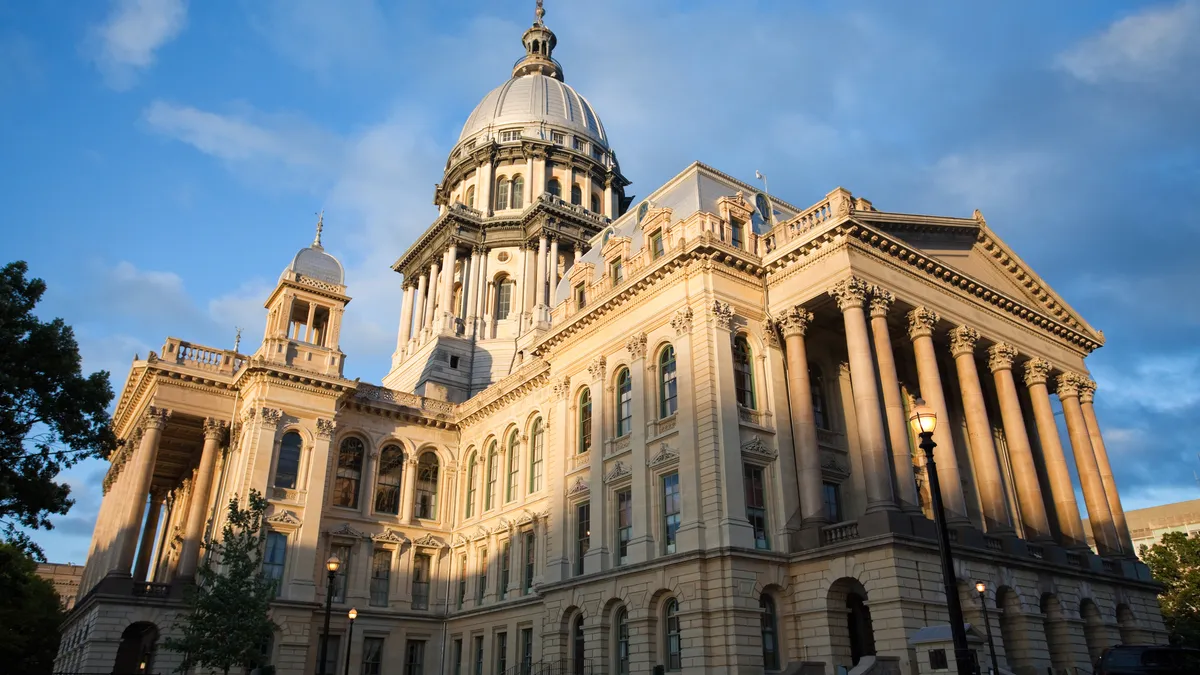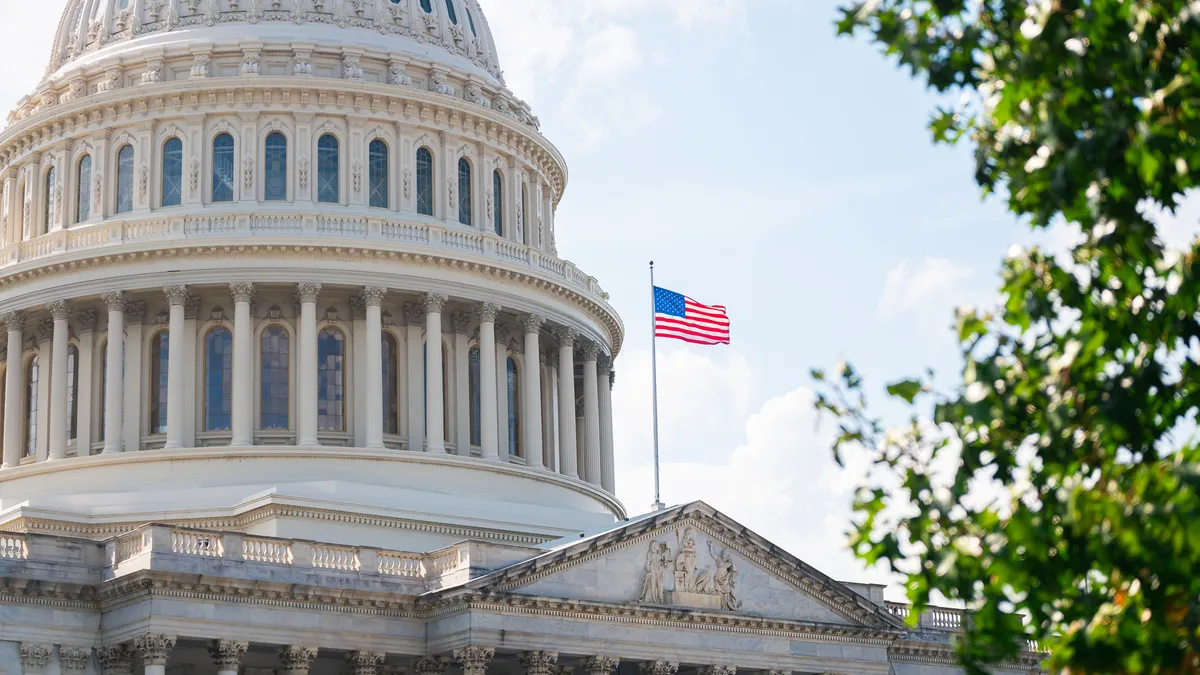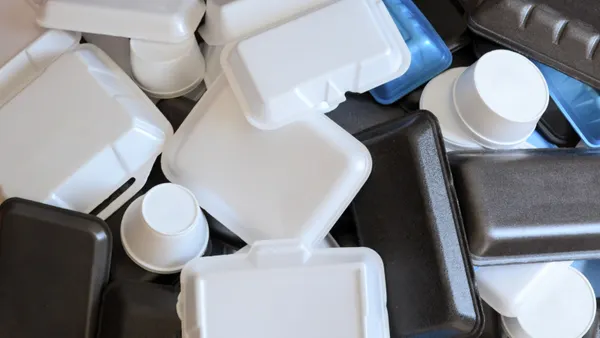Numerous state legislatures are poised to consider extended producer responsibility bills this year, fueling more complex conversations about how best to increase recycling rates for packaging.
The Recycling Partnership recently released a study supporting EPR for packaging and printed paper, saying such programs could create “nearly universal” recycling access, significantly boost residential recycling rates and help create more sustainable funding sources for recycling programs.
The study examined seven countries with EPR for packaging programs that yield high recycling rates for such materials. It looked at how those approaches could impact recycling rates in six U.S. states: Washington, Connecticut, Wisconsin, Maryland, Colorado and Florida. Four states — California, Colorado, Maine, and Oregon — have already adopted EPR for packaging legislation.
Waste Dive talked with Dylan de Thomas, The Recycling Partnership’s vice president of public policy and government affairs, about the benefits he sees in packaging EPR, as well as the tensions in where recycling stakeholders and lawmakers disagree over the best approach to building and maintaining EPR laws.
This interview has been edited for length and clarity.
WASTE DIVE: The Recycling Partnership’s report highlights countries with some very high recycling rates from EPR policies, while also estimating how well some U.S. states could pull off EPR. Knowing that the countries with EPR for packaging all operate somewhat differently, how did you approach the report knowing you couldn’t compare each data set apples to apples?
DYLAN DE THOMAS: We decided to take a spread of different types of programs to give an idea of the levels of performance. Some of the countries, pre-EPR, were already pretty successful, like the Netherlands and South Korea. Then you also have super-high performing EPR programs like Belgium, with an almost 90% [recycling rate], compared with Quebec and Portugal being in the 60% range. Similarly, when picking U.S. states [for the report], it’s a matter of [estimated] performance diversity, but also geographic diversity as well as the data that was publicly available to produce the baselines.
Of course, you can't do a direct comparison of Florida to Belgium. Those countries and provinces and states are very different. Will these [numbers in the report] be the exact numbers [programs achieve] following EPR passage and implementation? Of course not. There's so many complicating factors in there. It’s really meant to show that you do make a big jump [in recycling rates] when you have an organizing principle of access for recycling everywhere. It shows that big jump when you normalize how you can deliver that recycling service. Those are the things that you get from a consistently well-designed and well-implemented EPR program.
The report uses the term “smart, well-designed programs.” What does that entail, especially knowing that the recycling industry includes many different opinions over what the “right” EPR model should be?
Smart and well-designed is something that looks at the system itself and tries to build upon the system. Colorado is a really good example of that. It will have a robust needs assessment done by a third party, which then results in a plan with robust goals that has to be approved by a multi-stakeholder advisory council and the relevant environmental agency.
Smart and well-designed means having that feedback loop as opposed to a top-down model that dictates [how the program will run]. I'll use Maine as an example of the top-down model. I don’t mean any disrespect to Maine, and I know that they're going through their own implementation process, but I don’t think it gives that same opportunity for improvement of the system as much as some of the other laws, in particular Colorado.
The report was not out to analyze producer-run versus non-producer-run systems, but I would say the most successful EPR programs are producer-run. Oftentimes there's a mischaracterization of how these systems are regulated, as though the PRO is regulating itself when it's not. The PRO is heavily regulated in all of these systems by an advisory council, which gives guidance for what they're doing... I sit on the advisory council in Oregon [for Oregon’s recently-passed EPR law], which has diverse representation from people like [rural] city council members and environmental justice advocates. We’re also hearing directly from a lot of stakeholders. It’s a thoughtful and transparent system.
You started working on this report before the 2023 legislative season. Now that we’re seeing bills introduced or anticipated in places like Maryland, Washington, New York, Connecticut, how does that interplay with the premise of this report, particularly for bills that also propose additional aspects, like a container deposit system?
The bill I've been closest to is the Washington state bill, the WRAP Act [which has a bottle bill provision]. You really do see that feedback loop that I talked about. They've also done a really great job of bringing in diverse stakeholders. The best EPR bills have come from that robust cross-sector engagement. New York has the governor's EPR proposal, which has a similar structure within it. You see some of the DNA in a lot of the other bills that are being considered as well, but those are the two that I would highlight.
As for bottle bills, they are a proven and effective tool to be able to increase recovery of a very small part of the material stream. Bottle bills are themselves an EPR program, just for a narrower scope of packaging than EPR for printing paper and packaging. I am an Oregonian, and here, the bottlers essentially run the program. I would argue it has a very effective and efficient deposit return system and is similar to what is being presented in the Washington bill.
The numbers of the report are absolutely supported by DRS. In those European countries that have a [high] level of success, some have [bottle return systems] as a part of it, some of them don't. The lower-performing ones don't have that, or they have a narrower-focus DRS, and that was taken into consideration when developing the report.
What’s your assessment of how recent EPR bills are addressing the realities of where people are in terms of their current recycling access, their attitudes toward recycling and other hurdles that vary from state to state?
The two big innovations of American EPR are that all of these laws have a needs assessment that really looks deeply at the program that exists now. There’s also the concept of the advisory council. Oftentimes, when we look at recycling or waste, you're looking at it from one perspective, but you end up with better outcomes when you take a holistic approach, and that’s what these U.S. EPR innovations do for us.
I think the primary concern that you hear [from MRF operators and haulers] whenever EPR is even being considered — let alone when there's a bill — is that their business models [will be] upended or that EPR could potentially cause them to have stranded assets. At the same time, better-run systems with EPR can be a huge business opportunity for them as well. Recycling does not happen without MRFs and haulers, full stop.
In Oregon, oftentimes we’re also debating about whether we’re building EPR for the recycling system of today or EPR for the system of tomorrow. When you are in different parts of these geographically diverse Northwest states, you have a different recycling system and experience. Following the implementation of EPR in Oregon, we're going to have the same recycling system that recycles the same stuff wherever you go in the state.
The opportunity here in the U.S. is to be able to improve the recycling system that we have. People should be able to recycle as easily as they can throw something away, no matter where they are. I think that's a good case for EPR as a proven, successful model to help deliver that. Everybody's been somewhere where there's a bunch of trash cans, but there's no recycling bins, and who do you blame? It’s partly that inconsistent policy and that inconsistent delivery. EPR can help with that type of apathy around the recycling system. It can budget for behavior change and education and engagement-type work, and the producers pay for that.



